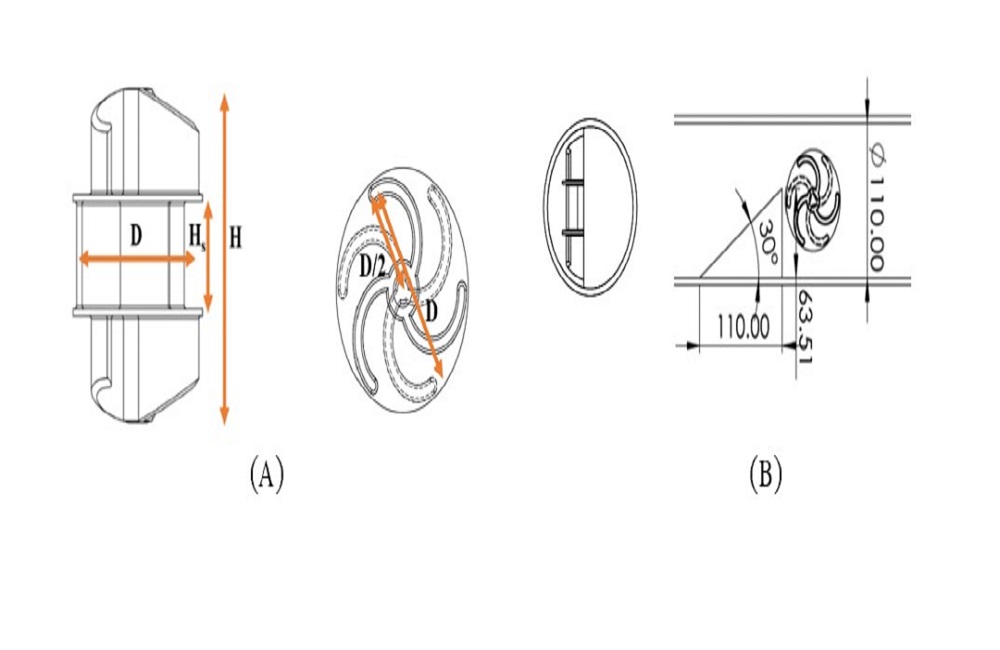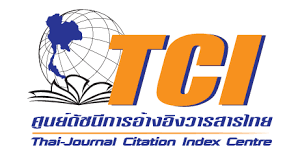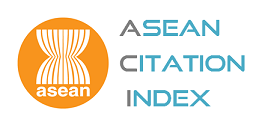Study on the Efficiency of the Savonius Hydro Turbines Installed in Water Pipes
Article 3427
DOI:
https://doi.org/10.69650/ahstr.2025.3427Keywords:
Savonius hydro turbine, Coefficient of power, Coefficient of torque, ANOVA, Baffle plate, Guide vaneAbstract
Hydroelectric power generation has predominantly been large-scale, relying on infrastructure like dams, and rivers. There has been significant expansion of various types of water pipe systems, industrial, and irrigation systems, and there is growing interest in sustainable energy, especially in regions with limited electricity access. For this study, we chose the Savonius turbine, a vertical cross-flow turbine classified as a low-head turbine. The Savonius hydro turbine (SHT) offers benefits like operation at low flow rates and head, and simplified maintenance. However, its low efficiency limits its application. This study aimed to enhance SHT efficiency for small water pipes with low flow and head, focusing on the factors influencing turbine performance. The factors studied were the number of blades, the number of stages, the phase shift angle, the stage height ratio, the aspect ratio (AR), and the use of a baffle plate. The tests involved testing the coefficient of power (CP), the coefficient of torque (Cm), and the tip speed ratio (TSR). Twelve types of SHT were installed with a guide vane to adjust the inlet angle to 30๐. The turbines were installed in 4-inch PVC pipes. The volumetric flow rate of water through the pipes was varied, with values of 5, 10, 15, 20, and 25 m³/hr. The results indicated that the SHT M5-1 with 3 blades, 3 stages, a height ratio of 1:1:1, a 60๐ angle of phase shift, AR=1.4, and a baffle plate, exhibited the highest efficiency at a flow rate of 25m3 /hr. The CP, Cm, and TSR were measured at 0.272, 0.313 and 0.871 respectively. Furthermore, the study also concluded that the SHT model M5-1 outperformed the SHT model M1-2, showing increases in the Cp of 0.174 and Cm of 0.198. ANOVA analysis was used to examine the parameters that affect turbine efficiency. It was found that the six factors and flow rate significantly influenced turbine efficiency. Notably, the M5-1 turbine exhibited the highest efficiency, which aligns with the experimental results.
References
Abulnaga, B. (1988). Water Power Without waterfall. https://www.researchgate.net/publication/276207052_Water_Power_Without_Waterfalls
Ahmed, W. U., & Zahed, J. H. (2014, September 5-6). Numerical study of two and three bladed savonius wind turbine [Conference session]. 2nd International Conference on Green Energy and Technology, Dhaka, Bangladesh. https://doi.org/10.1109/ICGET.2014.6966657
Ali, B., Nima, H., Amir, F. N., & Franco, M. (2023). Investigation of different deflector geometry and mechanism effect on the performance of an in-pipe hydro Savonius turbine. Applied Energy, 350, 121697. https://doi.org/10.1016/j.apenergy.2023.121697
Alpriza, S., Ari, P., Prija, T., & Syamsul, H. (2019). The horizontal axis type of Savonius water turbine in pipe using solid work simulation. Proceedings of the 4th International Conference on Industrial, Mechanical, Electrical, and Chemical Engineering, 2097(1), 030042. https://doi.org/10.1063/1.5098217
Ari, P., Budi, K., Dominicus, D., & Syamsul, H. (2018). The effect of deflector angle in savonius water turbine with horizontal axis on the power output of water flow in pipe. IOP Conf. Series: Journal of Physics: Conf. Series 979, 012043.
Chen, J., Yang, H., Liu, C., Lau, C., & Lo, M. (2013). A novel vertical axis water turbine for power generation from water pipelines. Energy, 54, 184–193. https://doi.org/10.1016/j.energy.2013.01.064
Gaurav, S., & Saini, R. P. (2020). A computational investigation to analyze the effects of different rotor parameters on hybrid hydrokinetic turbine performance. Ocean Engineering, 199, 107019.
Hamzah, I., Prasetyo, A., Tjahjana, D. D. D. P., Hadi, S. (2018). Effect of blades number to performance of Savonius water turbine in water pipe. Proceedings of the 3rd International Conference on Industrial, Mechanical, Electrical, and Chemical Engineering, 1931(1), 030046. https://doi.org/10.1063/1.5024105
Hoffmann, D., Willmann, A., Göpfert, R., Becker, P., Folkmer, B., & Manoli, Y. (2013). Energy Harvesting from Fluid Flow in Water Pipelines for Smart Metering Applications. Journal of Physics: Conference Series, 476, 012104. https://doi.org/10.1088/1742-6596/476/1/012104
Ibrahim, M., Zied, D., & Mohamed, S. A. (2014). Experimental investigation of the height effect of water Savonius rotors. International Journal of Mechanics and Applications, 4(1), 8-12.
Jusoh, M. A. M., Othman, M. F., Zubli, Z. Q., Noh, M. H. B. M., Hamid, A. H. B. A. J. P.-S., & Sciences, B. (2014). Preliminary Design of a Mini Hydroelectric System. Proceedings of Social and Behavioral Sciences, 129, 198-205.
Kailash, G., Eldho, T. I., & Prabhu, S. V. (2011). Influence of the deflector plate on the performance of modified Savonius water turbine. Applied Energy, 88(9), 3207-3217.
Menet, J. L. (2004). A double-step Savonius rotor for local production of electricity: a design study. Renewable Energy, 29(11), 1843-1862.
Miyoshi, N., Shouichiro, I., & Oshihiko, I. (2008). Performance of double-step savonius rotor for environmentally friendly hydraulic turbine. Journal of Fluid Science and Technology, 3(3), 410-419.
Mohamoud, H. A. (2013). Experimental Comparison Study for Savonius wind turbines of two& three blades at low wind speed. International Journal of Model Engineering Research, 3, 2978-2986.
Nahidul, I. K., Tariq, I., & Michael, H. (2009). Performance of savonius rotor as a water current turbine. Journal of Ocean Technology, 4(2), 71-83.
Nauman, R. M., Cheng, Y. N., & Elif, O. (2020) A review of the optimization studies for Savonius turbine considering hydrokinetic applications. Energy Conversion and Management, 226, 113495.
Payambarpour, S. A., Najafi, A. F., & Magagnato, F. (2020). Investigation of deflector geometry and turbine aspect ratio effect on 3D modified in-pipe hydro Savonius turbine: parametric study. Renewable Energy, 148, 44-59.
Pongsakorn, W., & Ratchaphon, S. (2016). The effects of turbine baffle plates on the efficiency of water free vortex turbines. Energy Procedia, 100, 198–202.
Roth, N. J. (1985). A prototype Design and Performance of the Savonius Rotor Based Irrigation System. Department of Mechanical Engineering, University of British Columbia.
Saini, G., Saini, R. P. (2020). A computational investigation to analyze the effects of different rotor parameters on hybrid hydrokinetic turbine performance. Ocean Eng, 199, 107019. https://doi.org/10.1016/j.oceaneng.2020.107019
Talukdar, P. K., Kulkarni, V., & Saha, U. K. (2018). Performance estimation of Savonius wind and Savonius hydrokinetic turbines under identical power input. Journal of Renewable and Sustainable Energy, 10(6), 064704. https://doi.org/10.1063/1.5054075
Tao, Ma., Hongxing, Y., Xiaodong, G., Chengzhi, L., Zhicheng, S., Jain, C., & Jiyun, D. (2018) Development of inline hydroelectric generation system from municipal water pipelines. Energy, 144, 535-548. https://doi.org/10.1016/j.energy.2017.11.113
Teruhisa, K., Kotomi, M., & Ryusuke, N. (2018). Experimental test and feasibility study of a micro in-pipe hydro power generator at a university building. IFAC Paper Online, 51-28, 380-385.
Vimal, P., Ganapathi, B., Eldho, T. I., & Prabhu, S. V. (2016). Influence of overlap ratio and aspect ratio on the performance of Savonius hydrokinetic turbine. International Journal of Energy Research, 41(6), 829-844. https://doi.org/10.1002/er.3670
Yosias, E. P., & Dwiseno, W. (2019). Performance of horizontal axis Savonius water turbine using deflector angle variations. Proceedings of the International Conference on Science and Applied Science (ICSAS 2019), 2202(1), 020114. https://doi.org/10.1063/1.5141727

Downloads
Published
License
Copyright (c) 2025 Asian Health, Science and Technology Reports

This work is licensed under a Creative Commons Attribution-NonCommercial 4.0 International License.












